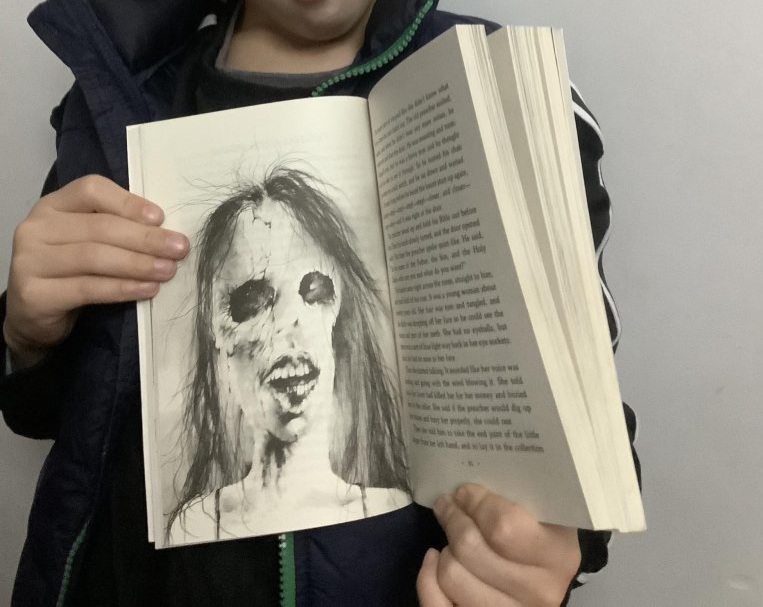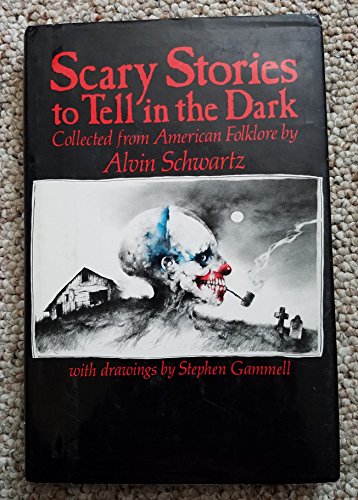Scary Stories to Tell in the Dark Alvin Schwartz: Are You Brave Enough to Read Them?

Scary Stories to Tell in the Dark Alvin Schwartz is not just a children’s book series — it’s a cultural landmark.
For more than four decades, these books have terrified, fascinated, and shaped generations of young readers.
With Alvin Schwartz’s masterful retelling of American folklore and Stephen Gammell’s nightmare-fuel illustrations, the books have etched themselves into the psyche of readers worldwide.
Alvin Schwartz: The Man Behind the Myths
Born in Brooklyn, New York in 1927, Alvin Schwartz had an insatiable curiosity about language, legends, and the stories people tell.
Before he became a famous horror writer, Schwartz worked as a journalist and nonfiction author. He studied sociology and journalism — a background that deeply influenced his writing style.
His fascination with folklore led him to collect and categorize hundreds of stories from oral traditions, which he adapted into books accessible to young readers.
Schwartz’s approach was unique: he never intended to simply entertain. His goal was to preserve the storytelling traditions of America — urban legends, campfire tales, ghost lore — and pass them down in a way that was both educational and spine-chilling.
This blend of anthropological research and bone-deep horror was groundbreaking, especially for books aimed at kids.
What set Scary Stories to Tell in the Dark Alvin Schwartz apart was its authentic tone. Schwartz didn’t dumb down fear; he respected his readers’ intelligence.
He treated children as capable of handling complex emotions — a revolutionary concept at the time.
Stephen Gammell: The Artist Who Painted Our Nightmares
Of course, no discussion of Scary Stories to Tell in the Dark Alvin Schwartz is complete without mentioning the unforgettable artwork of Stephen Gammell.
His illustrations didn’t just accompany the stories — they defined the emotional experience of the books.
Gammell’s use of charcoal, ink, and watercolors created ghostly, distorted, often grotesque images that felt like they emerged from your own nightmares.
Unlike traditional children’s illustrators, Gammell embraced ambiguity, shadow, and surrealism. His images left room for interpretation — and that’s what made them terrifying.
You weren’t always sure what you were looking at. And that uncertainty was worse than clarity.
Gammell’s style elevated Scary Stories to Tell in the Dark Alvin Schwartz to an art form.
Teachers, parents, and even professional illustrators have analyzed the emotional intensity in his drawings, noting how they capture existential dread in a way that resonates with both kids and adults.

Structure of the Series
The trilogy includes:
- Scary Stories to Tell in the Dark (1981)
- More Scary Stories to Tell in the Dark (1984)
- Scary Stories 3: More Tales to Chill Your Bones (1991)
Each book contains a mix of ghost stories, urban legends, horror folk tales, and narrative poems.
Some are meant to be read aloud with jump-scares (“BOO!”), while others are slow-burning psychological horrors.
Schwartz also included detailed bibliographic notes in the back, showing where each tale came from.
This gave the stories a historical and cultural context — they weren’t just fiction; they were echoes of real fears.
Interestingly, many readers believe that the rhythm and pacing of Scary Stories to Tell in the Dark Alvin Schwartz help create a ritualistic effect — like a modern-day version of campfire storytelling.
That’s why the books are often used in group readings, especially during Halloween.
Controversy and Censorship: The Battle Over Fear
Between 1990 and 1999, Scary Stories to Tell in the Dark Alvin Schwartz topped the American Library Association’s list of most challenged books.
Many schools and libraries banned the books due to their “inappropriate content” — both the graphic imagery and the macabre subject matter.
Parents complained about depictions of death, dismemberment, and violence.
But defenders of the books — librarians, educators, and even psychologists — argued that children crave scary stories for a reason.
They allow young minds to explore fear in a safe environment.
The books became a flashpoint in the culture war over what children should be allowed to read, symbolizing a broader tension between censorship and creativity.
Some experts suggest that banning books like Scary Stories to Tell in the Dark Alvin Schwartz actually makes them more alluring.
When children are told they can’t read something, their curiosity only grows.
Thus, these stories gained cult status as “forbidden tales” that kids would secretly pass around.
The Psychology of Fear: What These Books Teach Us
Child psychologists have long defended horror literature for children. Fear, when managed, is a vital emotional tool.
It helps children understand risk, resilience, and the unknown.
When reading Scary Stories to Tell in the Dark Alvin Schwartz, kids aren’t just getting spooked — they’re learning to face what scares them.
Schwartz often included stories that ended without resolution.
This ambiguity forced readers to fill in the gaps, to imagine what might come next — a technique that’s proven to sharpen creativity and abstract thinking in young readers.
Moreover, Scary Stories to Tell in the Dark Alvin Schwartz allows children to process personal fears in symbolic ways.
Whether it’s fear of isolation, death, or the unknown, each tale offers a metaphorical lens through which young minds can navigate anxiety.
This makes the books therapeutic as well as entertaining.
A Lasting Influence on Modern Horror
The impact of Scary Stories to Tell in the Dark Alvin Schwartz can be seen in modern media.
Many horror writers today cite the series as an early influence.
From creepypasta to Black Mirror, echoes of Schwartz’s stripped-down, folklore-driven storytelling still resonate.
Its legacy also lives on through multimedia adaptations.
The 2019 film brought new life to the stories while staying true to their haunting roots.
And thanks to social media, new generations are rediscovering these books and sharing their reactions — proving that fear, when delivered well, never goes out of style.
Why Scary Stories to Tell in the Dark by Alvin Schwartz Still Haunts Us
Few horror books have left a mark on generations like scary stories to tell in the dark alvin schwartz. Originally published in the early 1980s, these collections combined terrifying folk tales with disturbing illustrations, and they continue to spark fear and fascination to this day.
The genius of scary stories to tell in the dark alvin schwartz lies not only in the simplicity of the stories but in how they reflect timeless fears — fear of the dark, the unknown, and the unseen.
Children who read scary stories to tell in the dark alvin schwartz often carry the vivid imagery into adulthood. The stories — disturbingly brief yet memorable — tap into primal emotions that stay with readers long after the pages are closed.
It’s no surprise that scary stories to tell in the dark alvin schwartz has become a cultural staple in classrooms and libraries, sparking both controversy and admiration.
Despite being targeted at younger readers, the content of scary stories to tell in the dark alvin schwartz led to it being one of the most challenged books in American schools. Some parents and educators felt the stories were too graphic, but that controversy only fueled its popularity.
Today, these books are seen not just as entertainment, but as a reflection of cultural storytelling and the role horror plays in developing emotional resilience.
The enduring popularity of scary stories to tell in the dark alvin schwartz even led to a film adaptation in 2019, reigniting interest among a new generation.
From creepy scarecrows to haunted corpses, each tale showcases Schwartz’s ability to take traditional urban legends and adapt them into chilling narratives for young minds.
For a deeper look into this literary phenomenon, you can explore the full background of the series on
Wikipedia.
Books Similar to Scary Stories to Tell in the Dark by Alvin Schwartz
If you loved scary stories to tell in the dark alvin schwartz, then you’re in for a treat.
Many authors have created collections of short horror stories that leave readers with chills.
These tales often blend folklore with suspense, just like Schwartz’s unforgettable work.
The Haunting Hour by R.L. Stine
R.L. Stine, best known for Goosebumps, released The Haunting Hour, which is often compared to scary stories to tell in the dark alvin schwartz.
It’s packed with short, creepy narratives perfect for late-night reading.
Nightmare Soup by Jake Tri
Nightmare Soup is a modern take on classic horror storytelling.
Heavily inspired by scary stories to tell in the dark alvin schwartz, it features eerie illustrations and bone-chilling stories ideal for fans of psychological horror.
More Tales to Keep You Up at Night
Continuing the legacy of scary stories to tell in the dark alvin schwartz, this book dives into urban legends and creepy myths from around the world.
It’s a must-read for those who enjoy mysterious and unsettling plots.
📖 Related Articles
If you’re passionate about cinema and literature, you won’t want to miss our selection of the 10 best book-to-movie adaptations that masterfully combine storytelling and visual art.
For fans of epic narratives, our list of 5 unforgettable epic stories turned into films is a must-read.
Looking for something truly cinematic? Discover 7 must-watch films adapted from powerful books that will leave a lasting impression.
And if you’re in the mood for raw emotion, don’t miss this super sad, super true love story from 9 Elm Street—a tale that will stay with you long after the final word.

